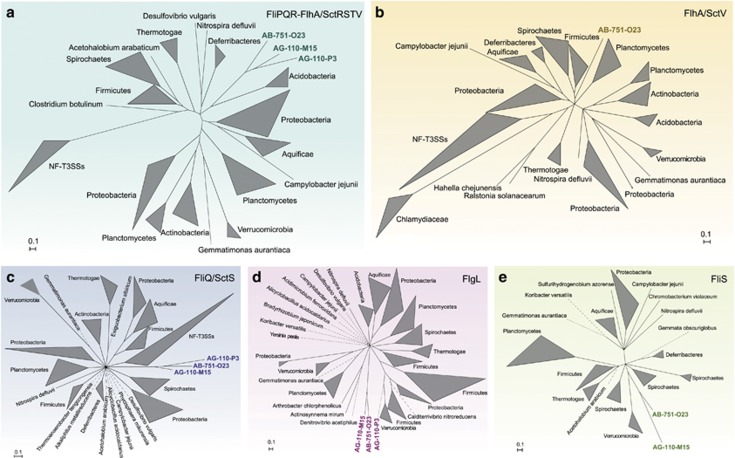Figure 4.
Common origin of flagellar proteins of marine chlamydiae. Bayesian inference of the phylogeny of selected flagellar proteins encoded at different genomic loci in the chlamydial SAGs. Phylogenetic trees obtained with a concatenated protein data set (a) as well as with individual proteins (b–e) are shown. Homologs of flagellar proteins in the NF-T3SS (SctRSTV) were included if possible. Dotted lines represent branches that have been shortened to enhance clarity. The monophyly of flagellar proteins is well supported in all trees (posterior probability=1), suggesting they are derived from a common ancestor and represent an ancient chlamydial trait. The only exception is the FlgL tree (d), which however is in general inconsistent with the 16S rRNA-based phylogeny of the organisms included (note that other coherent taxonomic groups such as the Proteobacteria or the Firmicutes are also not monophlyetic in this analysis). The original tree files and maximum likelihood phylogenies are available as Supplementary Data 1.

